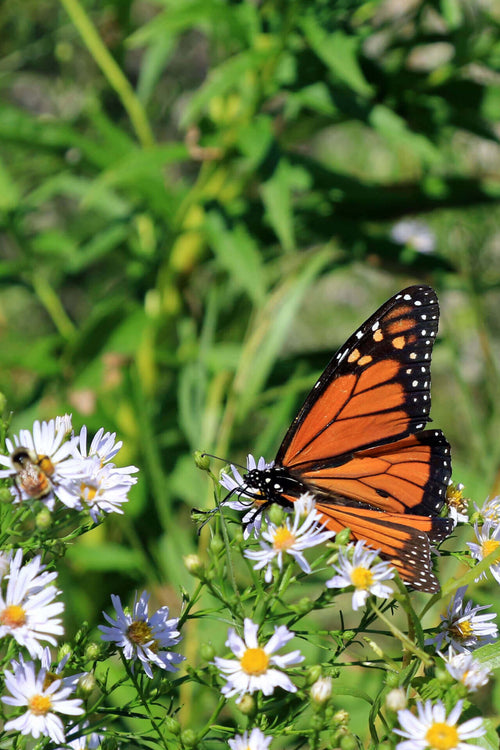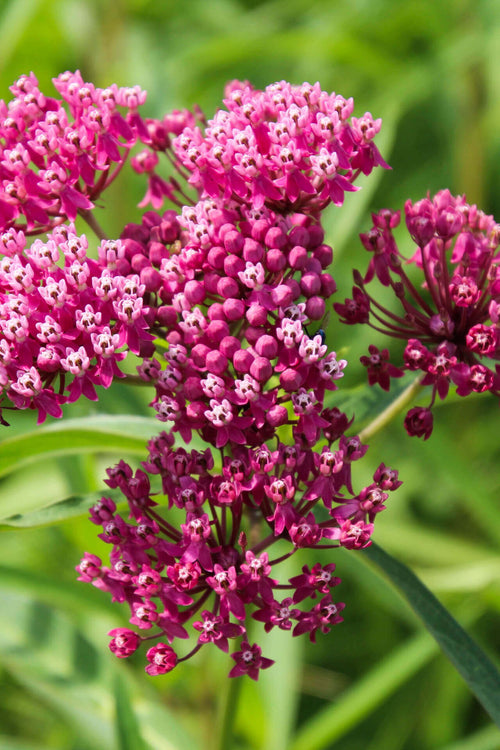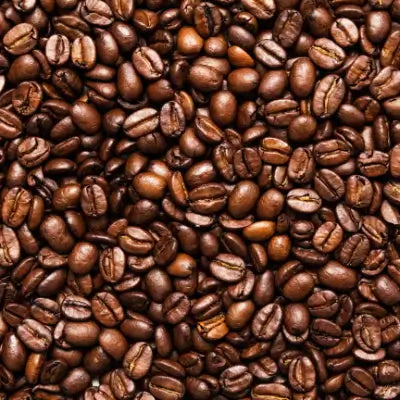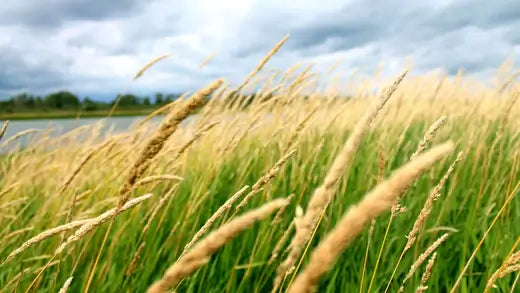A Spectacular Natural Phenomenon
The monarch butterfly (Danaus plexippus) is one of North America's most iconic and captivating butterflies. While it is beautiful and fascinating year-round, there is something genuinely magical about witnessing the monarch butterfly's incredible Journey and transformation during the fall season. In this essay, we will delve into the world of the colorful monarch butterfly, exploring its life cycle, migration patterns, ecological significance, and the unique charm it brings to the autumn landscape.
Life Cycle of the Monarch Butterfly Understanding the fall phenomenon of the monarch butterfly begins with examining its remarkable life cycle. The monarch butterfly undergoes a complete metamorphosis, which includes four distinct stages: egg, larva (caterpillar), pupa (chrysalis), and adult.
This process is an intricate and beautifully orchestrated dance of nature.
- Egg Stage: The life of a monarch butterfly starts with a tiny, spherical egg. Each egg is about the size of a pinhead and is typically laid on the underside of milkweed leaves. Within a few days, the egg hatches, revealing a minuscule caterpillar.
- Larva (Caterpillar) Stage: The monarch caterpillar is a voracious eater and devours milkweed leaves with remarkable speed. It proliferates during this stage, shedding its skin several times to accommodate its increasing size. The caterpillar is adorned with striking black, yellow, and white stripes, making it easily recognizable. This stage lasts for approximately two weeks.
- Pupa (Chrysalis) Stage: After the caterpillar reaches its full size, it forms a chrysalis, also known as a pupa. This stage is a period of transformation, during which the caterpillar undergoes a remarkable metamorphosis. Inside the chrysalis, the caterpillar's body liquefies and rearranges itself into the form of an adult butterfly. This process takes about 10 to 14 days.
- Adult Stage: The adult monarch butterfly is a sight emerging from the chrysalis. Its vibrant orange wings are adorned with striking black veins and white spots, creating a beautiful contrast of colors. These unique patterns warn potential predators that the monarch is toxic, thanks to the toxins it acquires from its milkweed diet. Adult monarchs have a relatively short lifespan, living for just a few weeks to a few months.
Monarch Butterfly Migration The monarch butterfly's fall migration is one of the most astonishing journeys in the animal kingdom. It is also one of the most celebrated and well-documented natural phenomena.
Unlike many other butterfly species, monarchs do not hibernate through the winter. Instead, they embark on an incredible multi-generational migration spanning thousands of miles.
Summer Generations: During the summer months, monarchs are busy breeding and laying eggs in the northern regions of the United States and Canada. These summer generations of monarchs only live for a few weeks. However, the last generation of the summer, known as the "super generation," has a unique destiny.
The Super Generation: The Super Generation is a group of monarchs born later in the summer. Unlike their short-lived predecessors, these butterflies are built for endurance. They have a longer lifespan and the incredible ability to fly thousands of miles to their wintering grounds in Mexico.
Migration to Mexico: As fall approaches, the super generation of monarchs embarks on an epic journey southward. This migration covers up to 3,000 miles and can take several months. This Journey is even more remarkable because these butterflies have never been to Mexico before; it is an inherited behavior passed down through generations.
Overwintering in Mexico: The oyamel fir forests provide a unique microclimate protecting monarchs from extreme temperatures. Millions of monarch butterflies cluster on the trees, forming dense colonies covering the branches like colorful leaves. This behavior helps them conserve energy and survive the winter months until spring arrives.
Spring Journey North: As temperatures rise and the days grow longer, the monarchs in Mexico begin their Journey back north. They mate and lay eggs along the way, starting the cycle anew. These generations continue the northward migration until they reach their summer breeding grounds in the United States and Canada, completing the remarkable circle of life.
Ecological Significance of Monarch Butterflies The monarch butterfly's life cycle and migration are not just awe-inspiring; they also play a significant role in the ecosystems they inhabit.
Here are some of the critical ecological contributions of monarch butterflies: Pollination: Adult monarchs are pollinators, feeding on nectar from various flowers. While they are not as effective at pollination as some other insects, they do play a role in the reproductive success of certain plant species. Their visits to flowers aid in the transfer of pollen, contributing to plant diversity and food production.
- Milkweed Relationship: Monarch caterpillars exclusively feed on milkweed plants. This relationship benefits both the monarchs and milkweed. The caterpillars gain protection from predators due to the toxic compounds they accumulate from the milkweed. In contrast, milkweed plants benefit from reduced herbivory by other insects when monarch caterpillars are present.
- Indicator Species: Monarch butterflies serve as indicators of environmental health. Their presence or absence in a particular area can reflect the state of the ecosystem. Conservation Challenges Despite their remarkable abilities and ecological significance, monarch butterflies face several challenges threatening their survival.
- These challenges include: Habitat Loss: The loss of milkweed habitat due to urban development, agriculture, and land-use changes has significantly impacted monarch populations. With milkweed, monarchs can complete their life cycle.
- Pesticide Use: Pesticides, particularly neonicotinoids, can harm monarch butterflies. These chemicals can reduce the availability of their food sources and harm both caterpillars and adults.
- Climate Change: The Climate can disrupt the timing of monarch migration and breeding, potentially leading to mismatches with milkweed availability and flowering plants.
- Disease and Parasites: Monarch populations can be susceptible to diseases and parasites, which can further reduce their numbers. Conservation Efforts Efforts to conserve monarch butterflies have gained momentum in recent years. Conservation organizations, scientists, and citizens are working to address these iconic insects' challenges.
- Some key conservation strategies include: Milkweed Restoration: Initiatives to plant native milkweed species and create habitat for monarchs are crucial for supporting their breeding and feeding needs.
- Monarch Waystations: Individuals and organizations can establish monarch waystations by planting nectar-rich flowers and milkweed. These small-scale habitats provide essential resources for monarchs during their migrations.
- Reforestation: Protecting and restoring the oyamel fir forests in Mexico, where monarchs overwinter, is vital for survival.
- Reducing Pesticide Use: Advocacy for the responsible use of pesticides and developing alternative pest control methods can help protect monarchs and their habitats.
- Citizen Science: Citizen scientists are crucial in monitoring monarch populations, tracking their migration, and contributing valuable data to conservation efforts.
Conclusion
The fall season brings the awe-inspiring spectacle of the monarch butterfly's migration. These colorful insects, with their remarkable life cycle and epic Journey, capture the imagination and remind us of the wonder of the natural world. However, they face numerous challenges, including habitat loss, pesticide use, and climate change.
Conservation efforts are essential to ensure the continued survival of monarch butterflies. By planting milkweed, creating monarch waystations, and advocating for responsible pesticide use, we can all contribute to conserving these iconic insects. The monarch butterfly's fall migration is not just a natural wonder; it is a call to action to protect the delicate balance of our ecosystems and preserve the beauty of the world around us.



















































